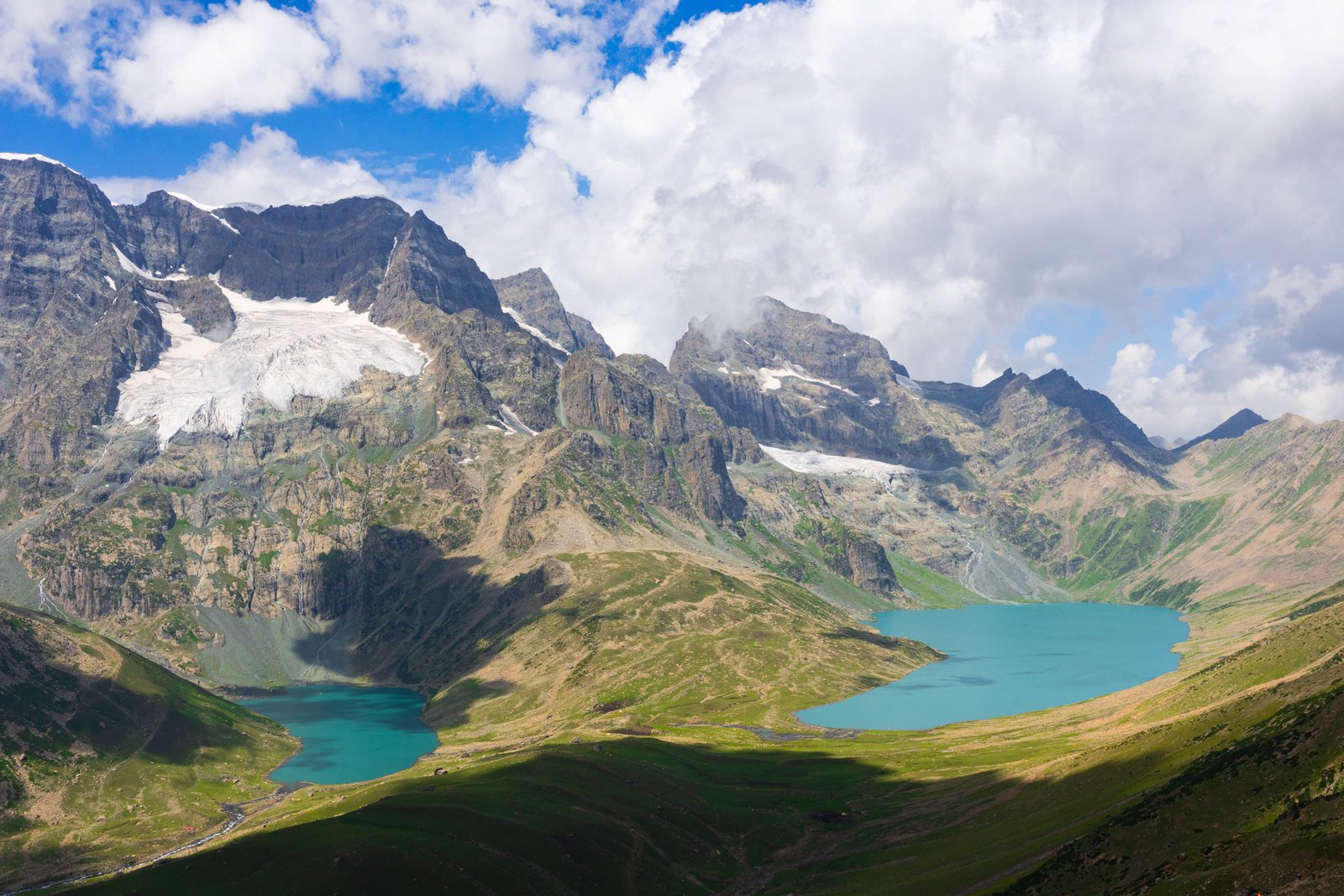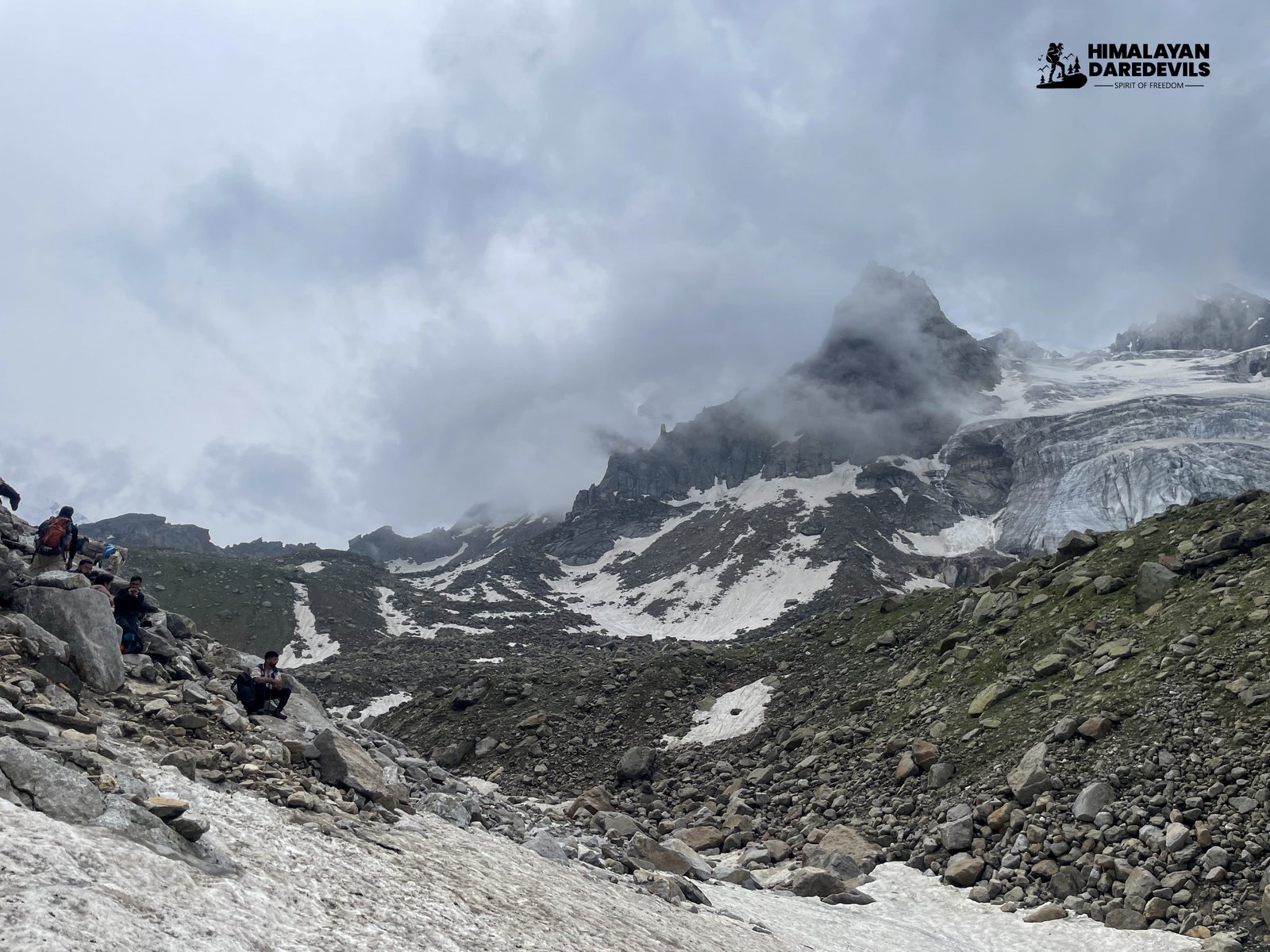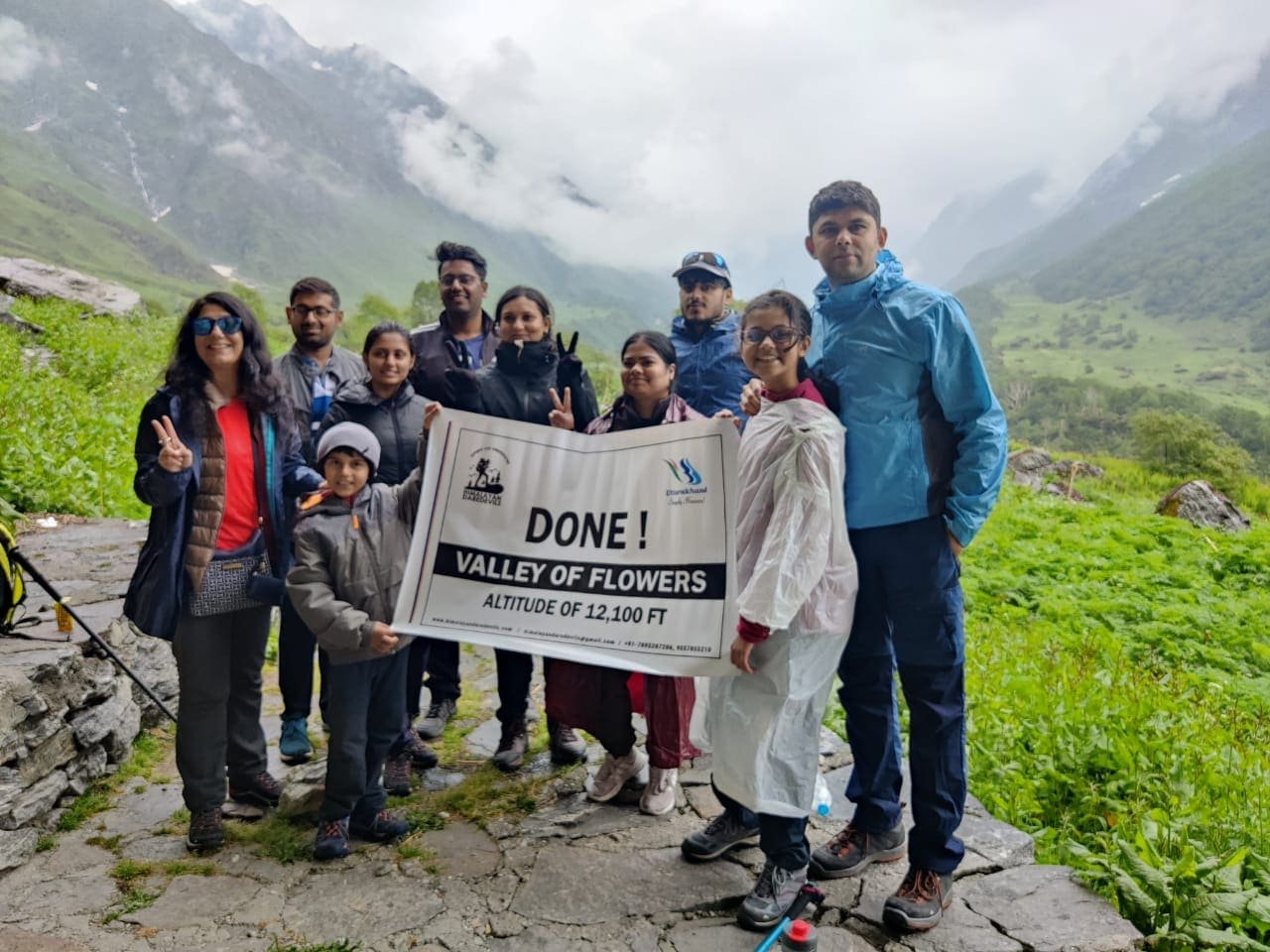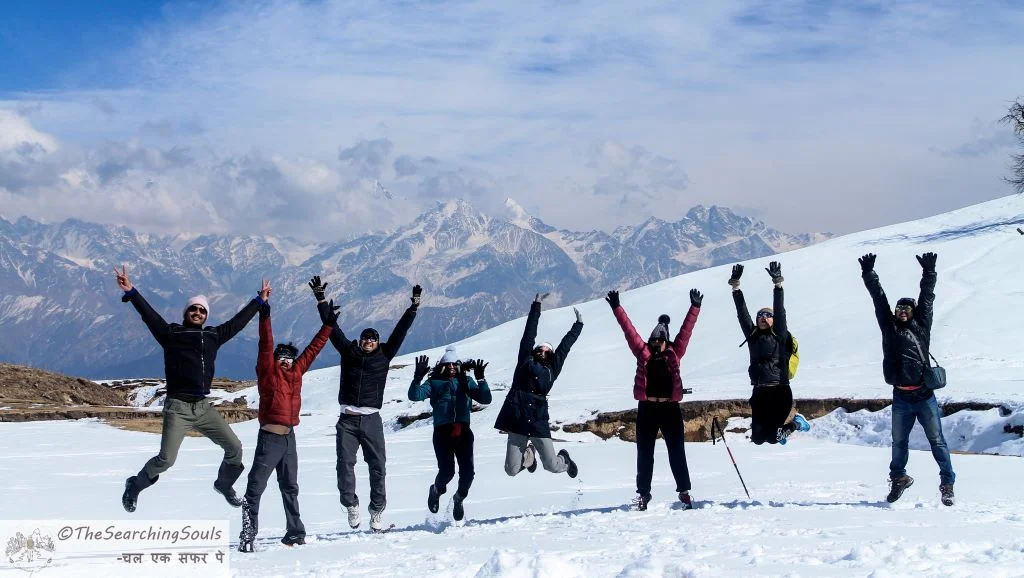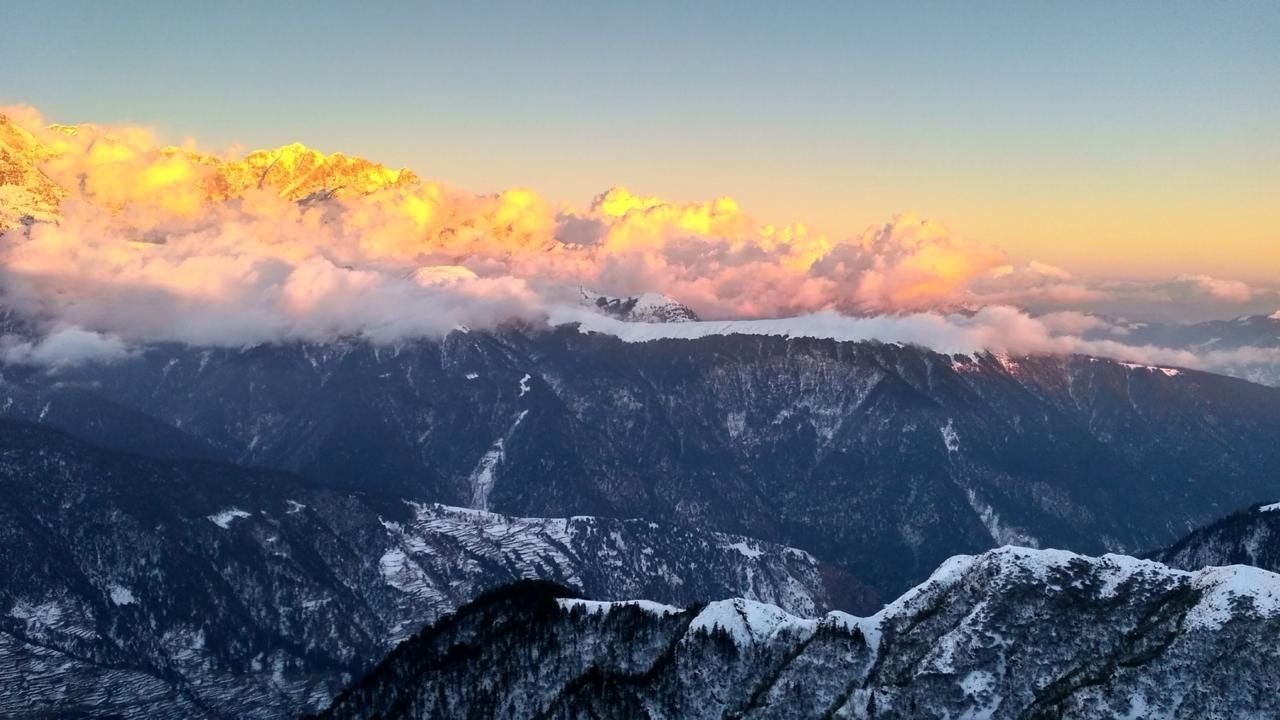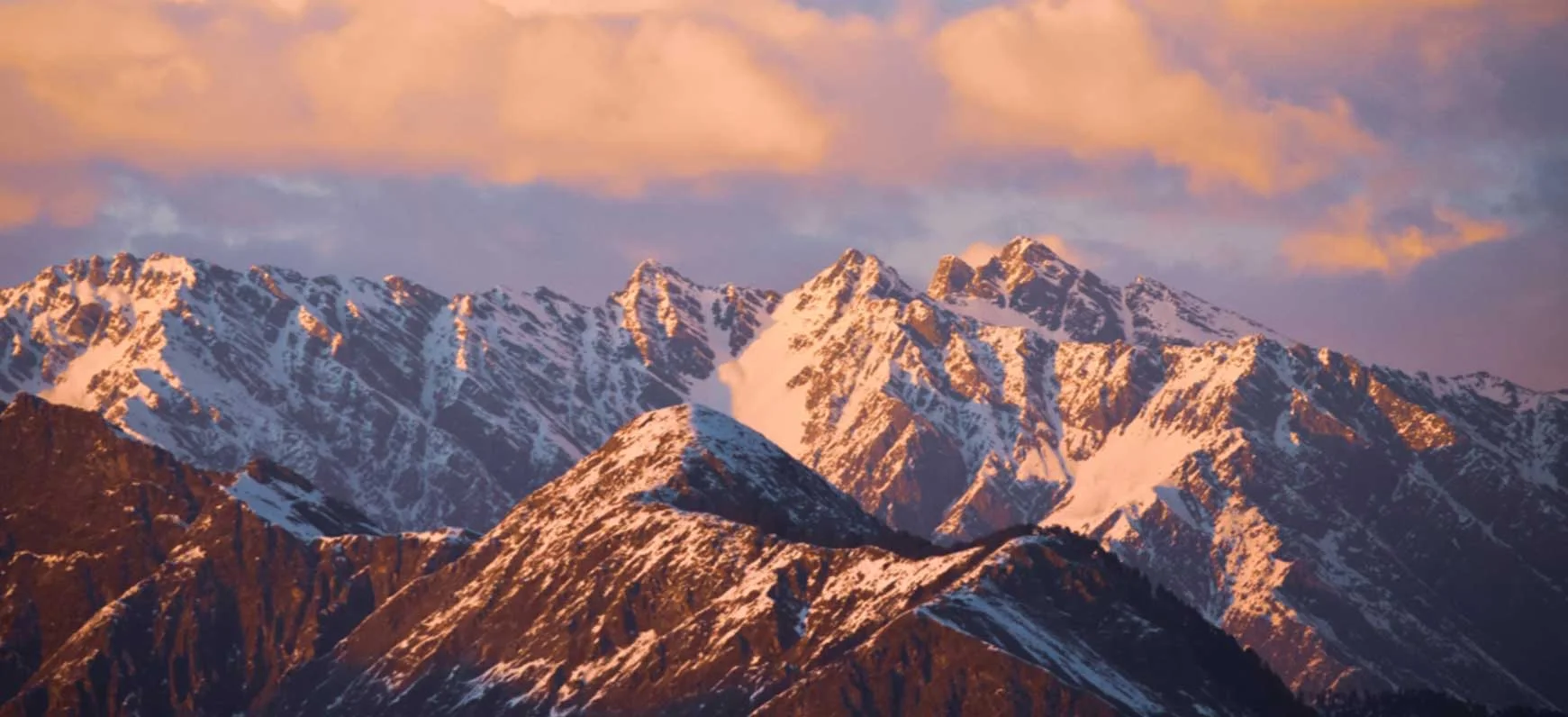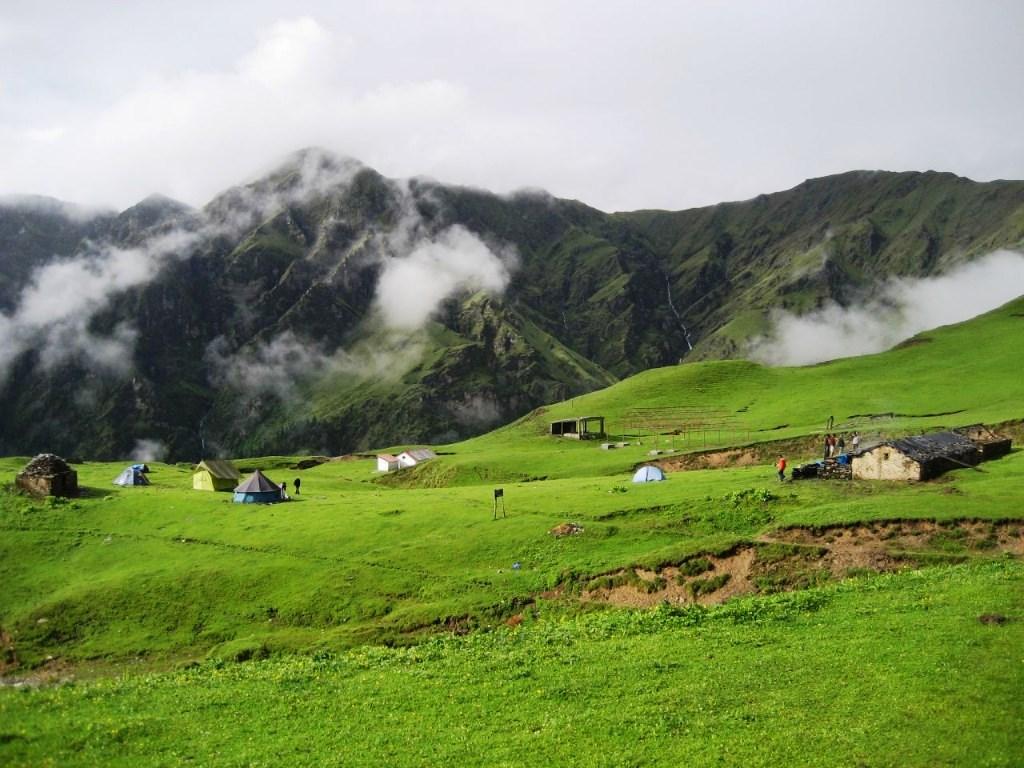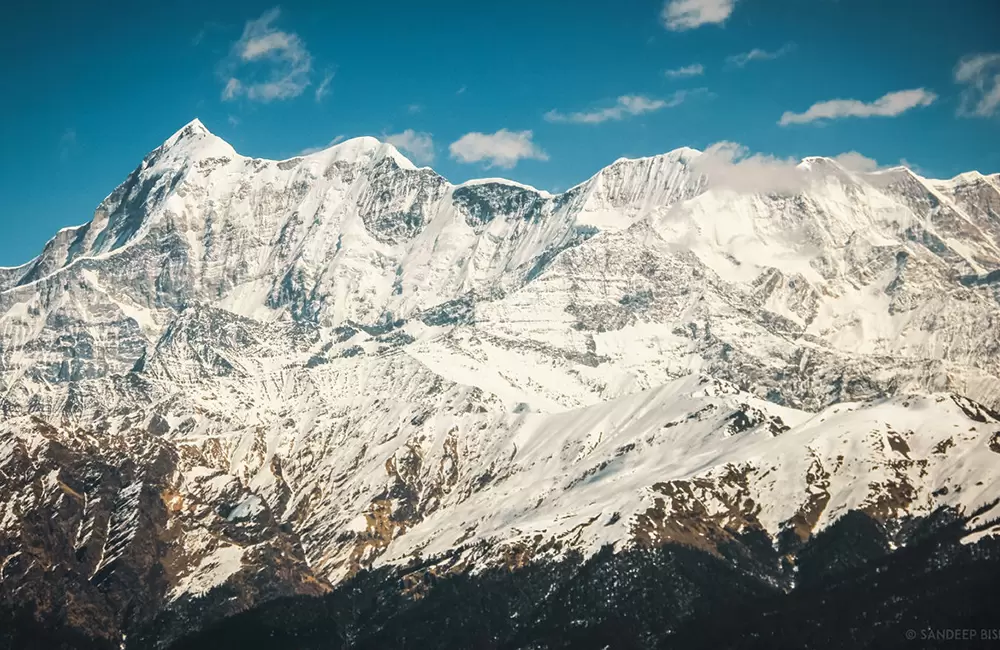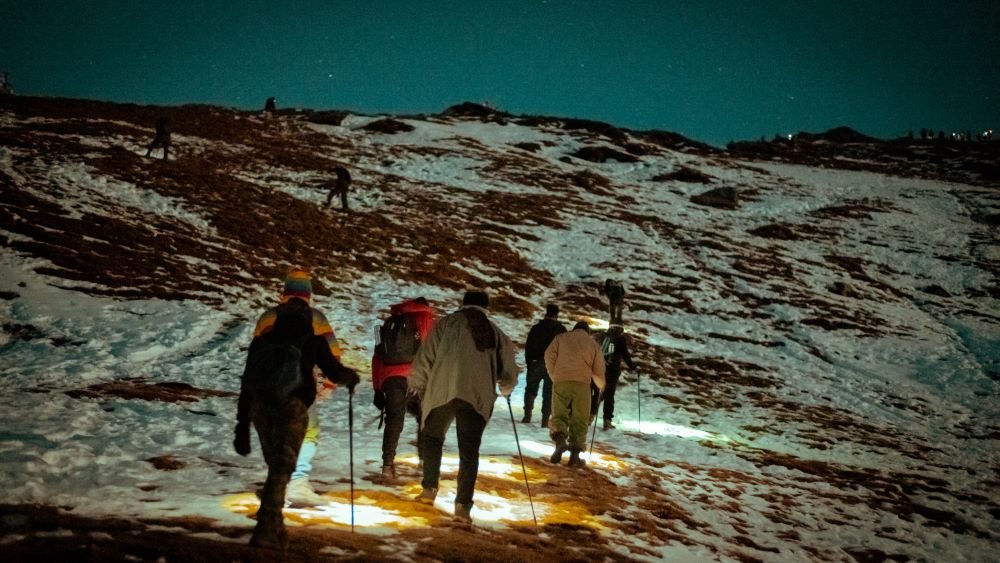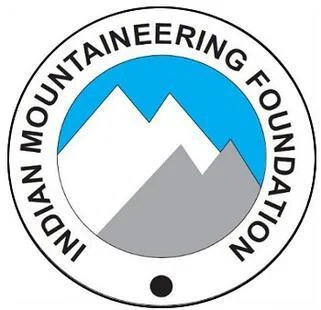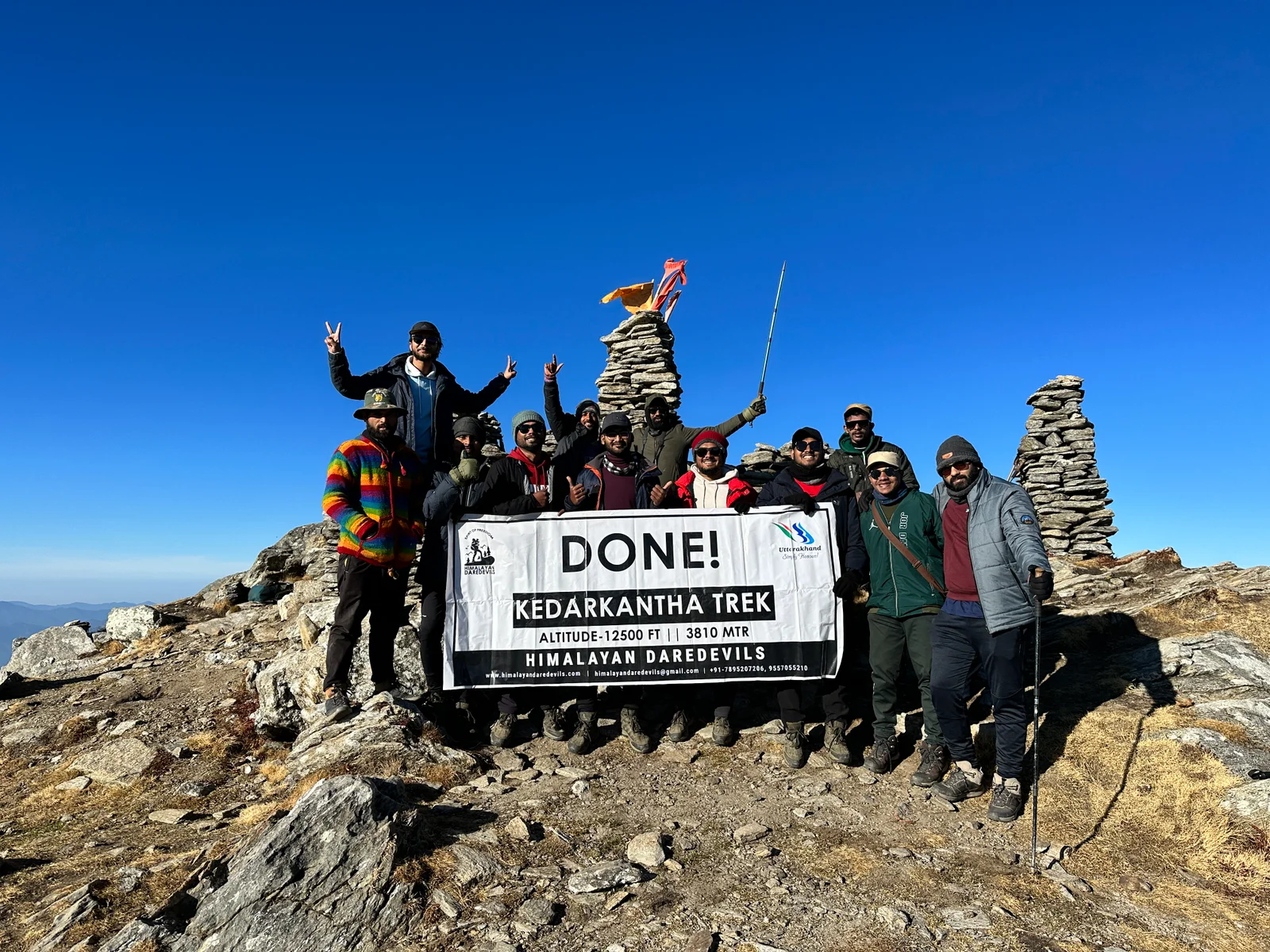19 May 2025
Situated in the Himachal Pradesh district of India the Hampta Pass Trek is a himalayan crossover trek taking you from the lush green valleys of Kullu to the stark, barren and almost desert-like mountains of the Spiti valley. Trekking to Hampta Pass offers you a little bit of everything - From lush green meadows to Tall Pine Forests and from Glacial Rivers to High Mountain passes. It will take you around four days to complete the trek and at the end of it you also get the opportunity to extend your journey and visit the otherworldly crescent shaped Chandratal lake. The constantly changing colors and scenes of the Chandratal and Hampta Pass trek are perfect for adventures looking for an exhilarating and visually stunning experience.
Where the Hampta Pass Trek Begins and Ends
The Base camp of the Hampta Pass trek is in Manali, from Manali you take a 2 Hour drive to a quaint himalayan village called Jobra, this is the Hampta Pass starting point. Jobra is surrounded by dense forests of pine,oak and birch and is also known for its vibrant wildflowers that bloom during the trekking season. The trek to Hampta Pass that lasts for about 4 days will take you on trails that follow the river upstream and take you to hidden waterfalls coming straight down from the snow capped peaks, the trail will also take you to the lush green meadows where you will camp while looking at the stars above. On the third day of the trek you will climb up to reach the highest point of the trek, The Hampta Pass standing tall at 14,100 ft. From here you will look down to see the wide and green valleys and look up to see the panoramic view of the Himalayan snow capped peaks.
The trek ends on the fourth day, on this day you will trek down from Siagoru to Chatru, entering the cold desert-like region of the Spiti valley. From Chatru, Chandratal is about a 3 Hour drive away.
What Makes the Hampta Pass Trek Unique?
The Hampta Pass trek is unique, as it is easy to trek to and also because it offers a variety of experiences in a short amount of time. In just four days you get to see the lush green meadows exploding with wild flowers, the himalayan waterfalls filled with cold glacial water, you get to reach the high mountain pass at a staggering height of 14,100 feet and while doing all this you get to witness the changing landscape of himalayas, going from the lush green valleys of Kullu to the barren but beautiful mountains of Spiti.
In just four to five days the Hampta Pass trek shows you all of the colors of Himalayas, so that by the end of the trek you truly feel like you know these mountains and what they have to offer.
Day-by-Day Route Overview
Day 1: Manali to Jobra, Trek to Chika (10,400 ft)
On the first day of your Journey you will drive to Jobra from Manali, along the way you will see the beautiful pine forests and flowing river streams. After having lunch at Jobra you will start the trek and climb for about 3 to 4 kilometers to reach Chika.
Day 2: Chika to Balu Ka Ghera (11,900 ft)
The distance from Chika to Balu Ka Gera is around 5 to 6 Kilometers and will take you about 4 to 6 hours to reach. The trail is easy in the beginning, going through alpine meadows and crossing numerous streams. As you come closer to Balu Ka Gera the sights of Hampta Valley and the grand Himalayas welcome you.
Day 3: Balu Ka Ghera to Hampta Pass (14,100 ft), descend to Siagoru (12,900 ft)
The third day of the trek is the most beautiful as well as the most challenging. On this day you will trek up to reach 14,100 feet above sea level, to a place that gives the trek its name, Hampta Pass.
It will take you five hours to reach the Hampta Pass from Balu Ka Ghera, the trail is around 7 kilometers long and is the most challenging part of the whole trek. You will find steep terrain, boulders, snow patches and loose rocks, all of this makes the trek more difficult than usual, but at the end of it you get to witness the most exhilarating view that is sure to take your breath away. The Hampta Pass scenic views include the panoramic vistas of the Indrasen Peak, Deo Tibba and the beautiful view of Kullu Valley on one side and the Spiti valley on the other.
After enjoying the view for some time, you will now climb downhill to reach Siagoru and camp there around tall trees and green bushes.
Day 4: Siagoru to Chatru (11,000 ft)
On the fourth and the final day of the trek you will trek down to Chatru, which will take you around four to five hours. On reaching Chatru you will surely be surprised to see the barren landscape of the campsite in contrast to the lush greenery of Kullu.
It is on the same day that you will take a 3 hour drive and reach the beautiful and other worldly crescent shaped alpine lake, the Chandratal.
Why Chandratal Is the Highlight of the Hampta Pass Trek
Lying next to the barren and brown himalayan mountains of the Spiti valley is the Chandratal lake. It can be said that the lake is the highlight of the Hampta Pass trek as it surprises and amazes the trekkers with its surreal, almost other worldly charm. From far away the lake looks like a bowl filled with blue water. The changing colors of the alpine lake reflect the mountains that surround it and the remote habitat of this lake offers a tranquil stillness that is rare to find.
Chandratal meaning ‘the moon lake’ is named so because of its unique crescent like shape, It is said that the lake was discovered by traders who used to use the route to travel to and fro from Tibet. The lake offers a dramatic finale to the Hampta Pass trek as the drastic shift in terrain is sure to bring a sense of awe. The lake is also a good way to end the trek as it shows the diversity of the Himalayan landscape.
The Chandratal lake trek is about a kilometer from the road and after a rewarding and exhausting trek it offers tranquillity to the soul. To sit beside its shores, to hear its soft waves moving in the cold mountain breeze, is something that is sure to be etched into your memory forever.
Physical and Mental Challenges You’ll Overcome
The Hampta Pass difficulty level is moderate and the trek is not the most challenging Himalayan trek that is out there, still it is full of physical and mental challenges that push you out of your comfort zone.
Physical Challenges
Climbing to a mountain pass situated at a height of 14,100 feet is no piece of cake. This task requires physical toughness. To tackle the various challenges that come your way throughout the trek you should make sure to prepare yourself before the trek. Focus on cardio and strength training. A good physical base goes a long way, it would help you in climbing the steep terrain, help you breathe and also help you face the metal challenges.
Fatigue,shortness of breath and in some cases altitude sickness are caused when the oxygen levels drop in high altitudes, it is important to follow the guide and follow a well laid out plan to climb the trek properly, without getting sick. The high altitude also brings cold temperature and harsh weather, with temperature dropping below 0°C at nights. It is very important that you make sure to bring warm clothes and also to bring reliable gear, like high ankle shoes, so that you can tread on snow as well as river crossings with ease.
Mental Challenges
The experience of being away from the modern comforts of the modern world is sure to bring a lot of discomfort. Sleeping in tents, no showers and no network can make you feel uncomfortable and sad. In situations like this you should keep in mind that the practice of living for a few days minimally would help you appreciate what you have back home, this is one of the main reasons why people return back to the mountains again and again.
Best Time to Do the Hampta Pass Trek
The best time to do the Hampta Pass trek is from mid-June to mid-October, this time offers clear skies and pleasant weather. It is during the months from June to September when the trail is green with vegetation, the meadows exploding with colorful vibrant wildflowers and the temperature comfortable.
The temperature starts to fall as October comes closer and the trails start to see less crowd, making the ending season of the trek best for trekkers who want to experience the tranquility and stillness of the Himalayan trail. The days from late September to mid October also offer the golden and orange scenes painted by the rising and the setting sun.
Packing Essentials for High-Altitude Terrain
It is very important to carry the right gear if you want to experience the hassle free trip to the mountains. Here are some of the equipment that are a must have.
3 T-shirts (advisable quick dry): Choose quick-drying T-shirts made from breathable and moisture-wicking materials. This will help keep you cool and dry during your trek.
2 trek pants: Choose lightweight and comfortable trek pants that are easy to move in and can dry quickly if wet.
Jacket (-10 degree): A warm jacket is essential for cold weather. Choose a jacket that is waterproof and windproof, and provides good insulation.
Fleece or hood (2): Fleece jackets or hoodies are great mid-layer options to keep warm. Bring at least two, as they can also be used as an extra layer at night.
Sunglasses (UV protected): Protect your eyes from the sun's harmful UV rays with sunglasses that are designed for outdoor activities.
Sun cap: A sun cap or hat with a brim will protect your face and neck from the sun.
Hand gloves: Bring a pair of lightweight gloves to keep your hands warm and protected from wind and sunburn.
Woollen cap: A woollen cap will keep your head and ears warm at night or in cold weather.
Socks (3 pairs min): Bring at least three pairs of good quality socks that are moisture-wicking and provide good cushioning and support for your feet.
Headlamp: A headlamp will come in handy if you're hiking in low-light conditions or need to find your way in the dark.
Trekking pole (if needed): Trekking poles can help reduce strain on your legs and provide additional support on steep terrain.
Rain cover\poncho: A rain cover or poncho will keep you and your gear dry during unexpected rain showers.
Day pack (if you plan to offload your bag): If you plan to offload your backpack during the trek, bring a smaller day pack to carry essentials like water, snacks, and a first aid kit.
A toiletry kit: Bring a small kit with personal hygiene items, such as a toothbrush and toothpaste, wet wipes, hand sanitizer, and toilet paper.
Lunchbox, cup, spoon: If you plan to bring your own food, bring a lunchbox, cup, and spoon to carry and eat your meals.
2 one-liter bottles: Staying hydrated is crucial, so bring at least two one-liter bottles to carry water.
2-3 plastic covers to keep your wet or used clothes: Plastic bags are useful for keeping wet or dirty clothes separate from the rest of your belongings. They can also be used to pack out any trash or waste you generate during the trek.
Conclusion
The journey to Hampta Pass and Chandratal is an unforgettable experience, sure to stay with you forever. The serene visuals of the lush green rolling hills of Kullu in contrast to the barren and brown, almost otherworldly beauty of the Spiti valley presents to you the full expanse of the Himalayan landscape. The trek ends at Chatru and from here a 3 hour drive takes you to the Chandratal lake where you see the crescent lake and think about the journey you took to reach it. The full experience of Hampta Pass trek and Chandratal is something that everyone should go through.
Himalayan Daredevils is for people who have the appetite for adventurers, and who seek to go on this awe inspiring journey, without going through the troubles of permits, planning and all the other hassles that tag along. Our Team of experienced guides and experts make sure that your trip to the mountain is safe and comfortable. For a memorable trip to The Hampta Pass choose the Himalayan Daredevils now.

